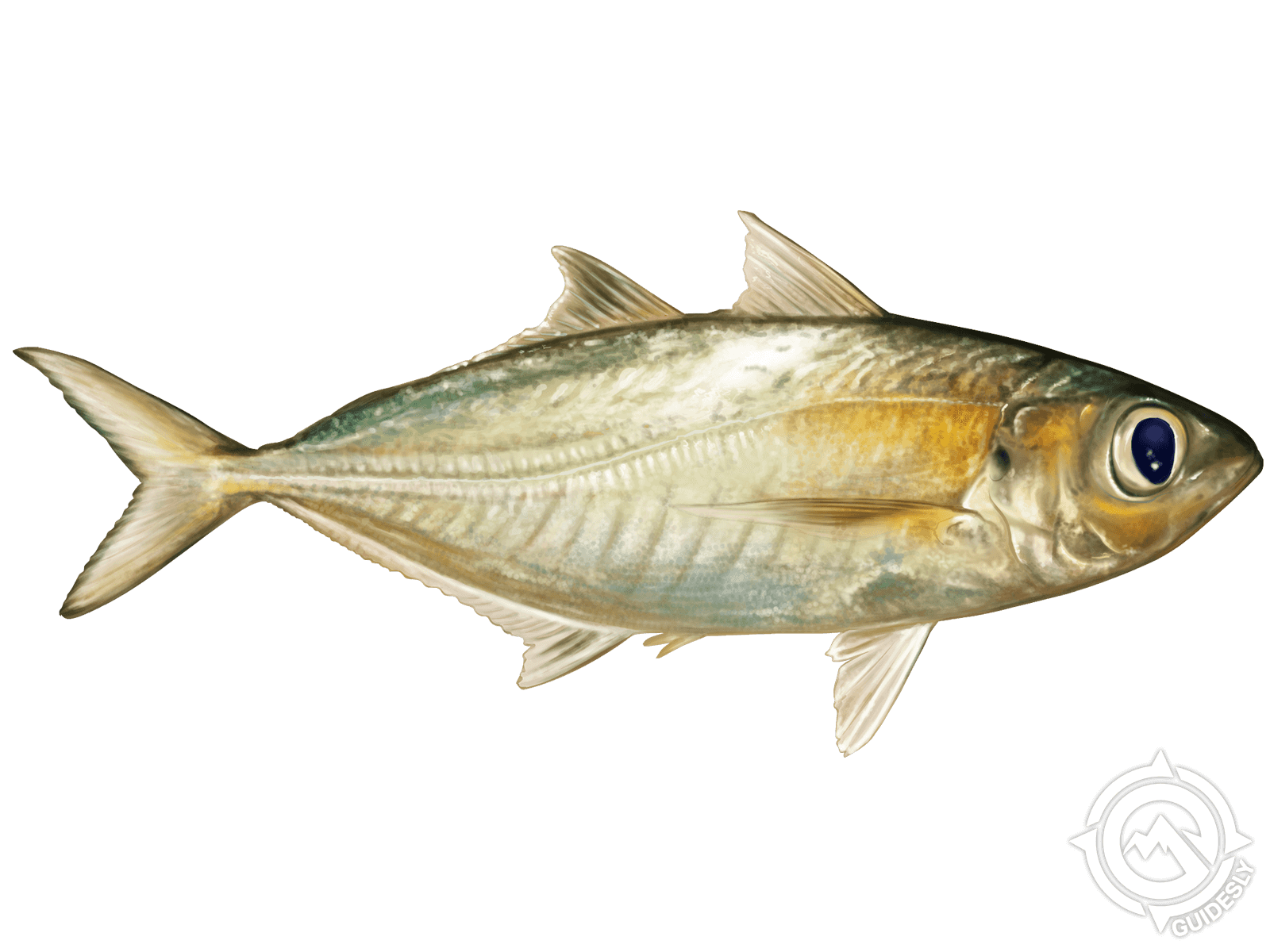Bigeye Scad

Species Details
Selar Crumenophthalmus
Carangidae
Perciformes
Coral Reef, Onshore, Offshore
1 - 2 lbs.
8" - 15"
Bigeye Scad (Selar crumenophthalmus) Fish Description
Bigeye Scad (Selar crumenophthalmus) is a saltwater fish usually found in tropical waters around the world. As the name implies, the fish has huge eyes that are covered in a fatty eyelid. Its elongated fusiform body is colored metallic blue-green on the top part that fades to silvery-white on the lower part. It also has a narrow yellow stripe that runs horizontally along its body from the top part of the operculum to the base of the caudal fin. Another distinctive feature of the fish is its deeply forked tail that is attached to a rather slim base.
The Bigeye Scad is a schooling fish often found in huge numbers along coastal waters. Commercial fishers widely target this fish all around the globe. They are known to be oily but have firm, flesh and is known to be quite tasty. In fact, it’s a popular food fish in some countries including Australia, Mexico, and the Philippines. This fish is also called Akule in Hawaii and a popular grilling fish in the islands. Recreational fishers, however, target the fish not only to be eaten but for using as bait for larger species as well.
Despite the fish’s popularity as food fish, little is actually known about its behavior, movements, diet, habitat, and reproduction. What we do know about the fish is that it is usually more active at night and, with an average lifespan of only two years, they are not only short-lived but matures quickly.
Diet and Size
Bigeye Scad are carnivorous and mostly feed on benthic invertebrates, small crustaceans, small fish, fish larvae, and zooplankton.
Bigeye Scad are a small fish with an average size of about seven and a half inches and barely a pound in weight. Little is known about their swimming speeds but they are generally observed to be rather quick and agile while moving in huge schools.
Bigeye Scad Interesting Facts
- They are sometimes called purse-eyed scad, goggle-eyed scad, Akule, goggler, horse mackerel, horse-eye Jack, or Jackfish
- They can only grow as much as fifteen inches long.
- Big Eye Scads are pelagic schooling fish often found in tropical waters near coasts.
- They school in medium to large congregations of hundreds to thousands of individuals.
- Huge schools can produce low-frequency hydrodynamic sounds from their collective movements.
- They are mostly active at night and move to deeper waters during the day.
- They mature within seven months of their life and tend to live for only two years.
- Bigeye Scads make rasping sounds by grinding their pharyngeal teeth when they are captured.
- They are a popular food fish in some Asian and Pacific countries.
- Bigeye Scads are sometimes used as bait for larger fish species.
- They are called Akule in Hawaii and a popular grilling fish in the islands.
- Their flesh is said to be sweet, oily, and firm.
Fishing Tips
The Bigeye Scad are nocturnal fishes. That means, get your gear ready up at night! As for the best time to catch them, you'll have to monitor when they spawn. That's usually when they leave inshore and head to the deeper waters. For some anglers, the best time to fish for the Bigeye Scad (or the Akule) is when it's a new moon. Make sure that there are no strong winds either that night or it's going to mess up your chances of fishing.
What some anglers recommend you do is have an electric lamp. Find a spot where the Bigeye Scads are congregating before shining the lamp onto the water. Slowly shrink the light size until you see the fish being more concentrated in the circle of light. Focus it near or under the boat so that the Bigeye Scad will congregate there.
While waiting for them, prepare your equipment. In Hawaii, they recommend you use 5-6 hooks to catch them. For lines, a 35 lbs test for the mainline and a 10-20 lbs test line for snoods. For lures, Hawaiians recommend using a white-colored lure. So, white threads and white feathers are normally used when making a lure for the Bigeye Scad. They sometimes bite black one but you might snag a Mackerel Scad instead since they're most likely in the same area.
For bait, some people throw in some cut fish bait or fish near areas that have zooplankton to attract them.
Habitat and Distribution
Bigeye Scad are often found swimming in neritic zones or the shallower parts of the coastal waters near reefs—from the surface up to depths of around six hundred feet. They are also found in tropical to sub-tropical waters of both the Atlantic and Pacific Oceans. In the US, this fish species can only be caught within the coastal waters of the Gulf of Mexico.







